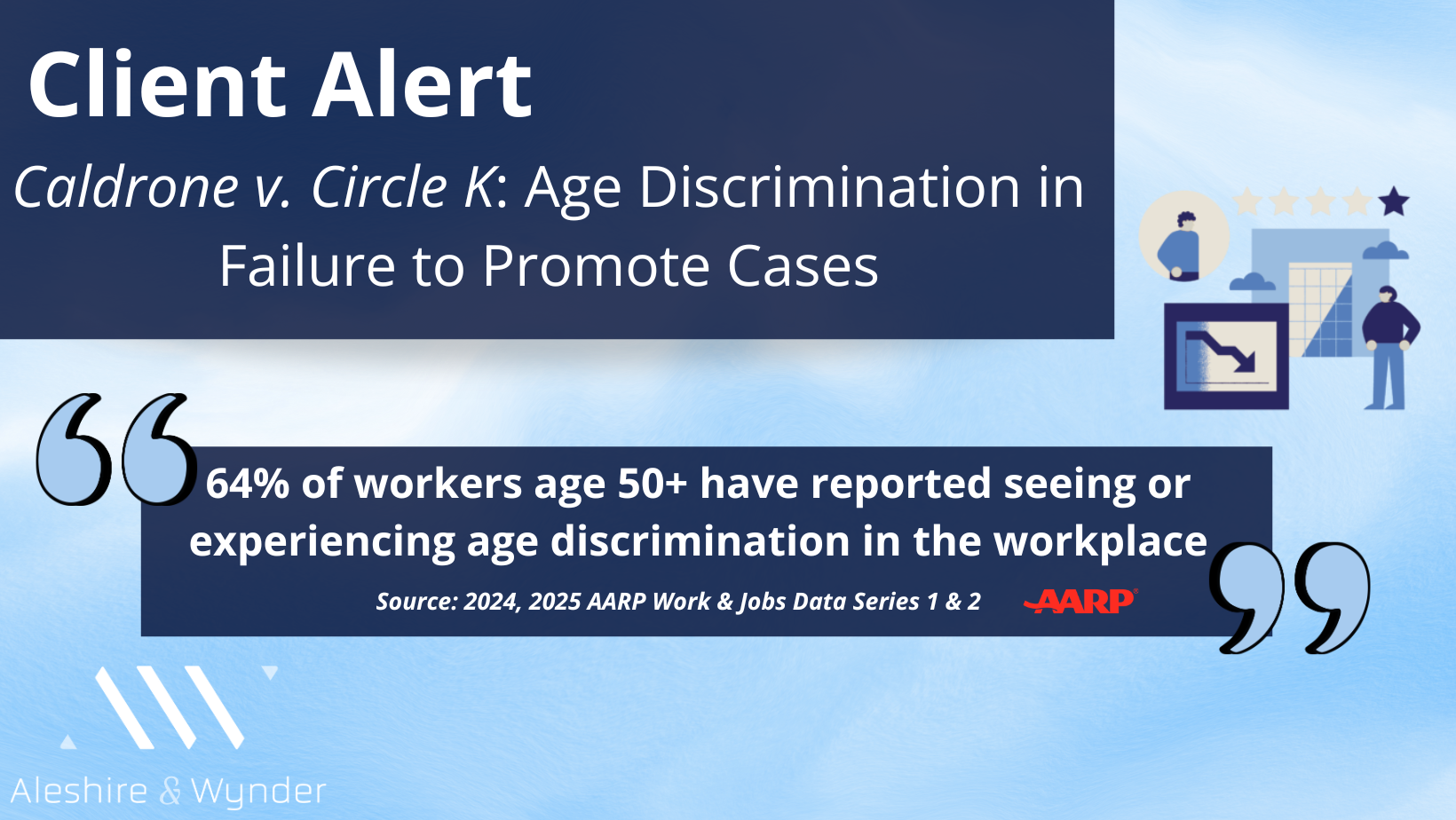An Important Review of Caldrone v. Circle K Every Employer Needs to Read

Closing the Gap and the Loophole: Deviation May Equal Causation After Caldrone Finds Liability for Handpicking A Younger Employee
An Important Review of Caldrone v. Circle K Every Employer Needs to Know
Beyond the 10-Year Rule
The Ninth Circuit in Caldrone v. Circle K clarified that even an age gap of less than 10 years can be considered "substantial" if the plaintiff provides additional evidence of age-related bias, forcing employers to examine the subjective factors and potential biases in their decision-making processes. The Caldrone v. Circle K decision is also a critical warning for California employers that inconsistent hiring and promotion practices, especially "hand-picking" candidates without posting the position, can create a triable issue of discrimination, making consistent, documented policies more important than ever.
In Caldrone v. Circle K., several Circle K employees over the age of 40 accused their supervisor of age discrimination – alleging that he made disparaging comments about older workers, urged them to retire, and openly expressed a preference for promoting younger employees. The plaintiffs, aged 54, 55, and 56, claimed they were denied a chance to apply for a regional director promotion that was instead awarded to a 45-year-old colleague who was hand-picked by the allegedly ageist supervisor.
Substantial Age Gap: Not the Only Factor
Even though the plaintiffs and the selected employee were all over 40, the Court emphasized that a “substantial” age gap is not strictly defined by numbers alone. Citing France v. Johnson (2015) 795 F.3d 1170, the Court reaffirmed that while a 10-year difference often raises an inference of discrimination, smaller age gaps may still be significant when accompanied by other biased conduct.
Here, the supervisor’s repeated age-related remarks and stated preference for younger candidates created exactly that scenario. The Court held that such behavior could sway a jury to view an age gap of less than 10 years as substantial enough given the discriminatory comments, satisfying the first step in an age discrimination analysis.
Step-by-step Evaluation of Discrimination Claims
The Court applied the McDonnell Douglas burden-shifting framework to assess the discrimination claims.
- Prima facie case: The employees must show that they are in a protected class (over 40), were qualified for the position, suffered an adverse employment action, and that the opportunity went to a substantially younger person.
- Employer’s response: The employer must then offer a legitimate, non-discriminatory reason for its decision.
- Employee’s rebuttal: Employees may show the employer’s reason is pretextual – a cover for discrimination.
Failure to Post the Job Strengthened the Employees’ Case
The Court further rejected the notion that plaintiffs had to apply for the promotion in order to be considered qualified for the position, particularly when Circle K never advertised it. Instead, deviating from past practice, the supervisor handpicked the younger employee. The Court observed that it “makes little sense to require plaintiffs to demonstrate they submitted an application when an employer . . . does not announce that a position is available.”
Key Takeaways for Employers:
- Don’t skip the posting process: Failing to advertise a promotion opportunity can create the appearance of favoritism or bias
- Be consistent: Departures from established procedures may be viewed as evidence of discrimination
- Eliminate bias: Even casual remarks about age can resurface in litigation as proof of discriminatory intent
- Document merit-based decisions: Ensure promotions are supported by objective, performance-based criteria
- Remain compliant: Remember that both federal and state laws – ADEA and FEHA – protect against age-based discrimination in employment decisions
This case underscores that age discrimination does not always require a large numerical age gap – supervisory comments and patterns of behavior may still reveal discriminatory motives. Even a modest age difference, when paired with biased comments or procedural irregularities, can expose an employer to liability.
Employers must be proactive: ensure that supervisors and employees alike avoid creating an impression that “younger” automatically means “better,” and maintain fair, transparent promotion practices.
* Specific loan program availability and requirements may vary. Please get in touch with your mortgage advisor for more information.
